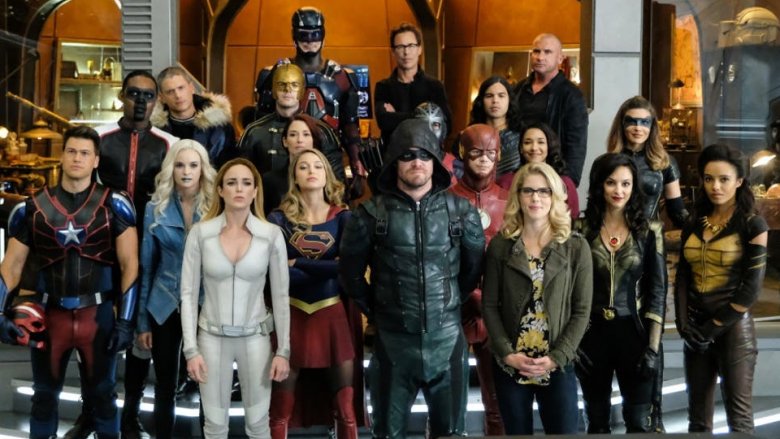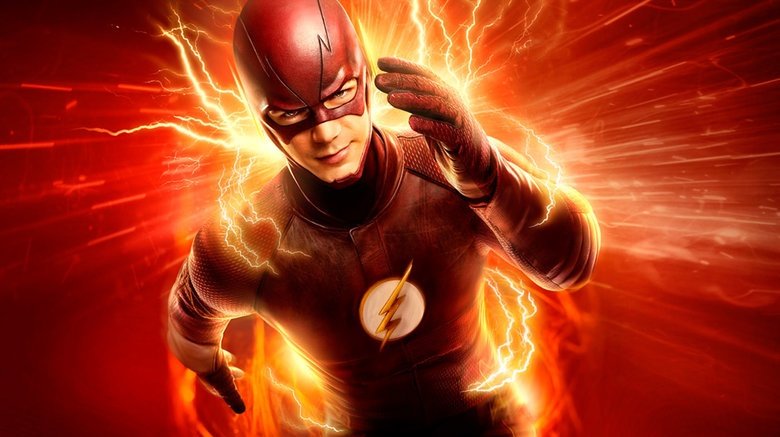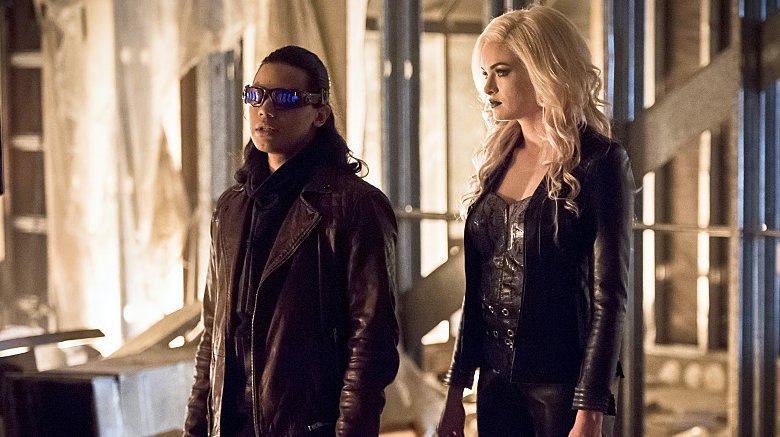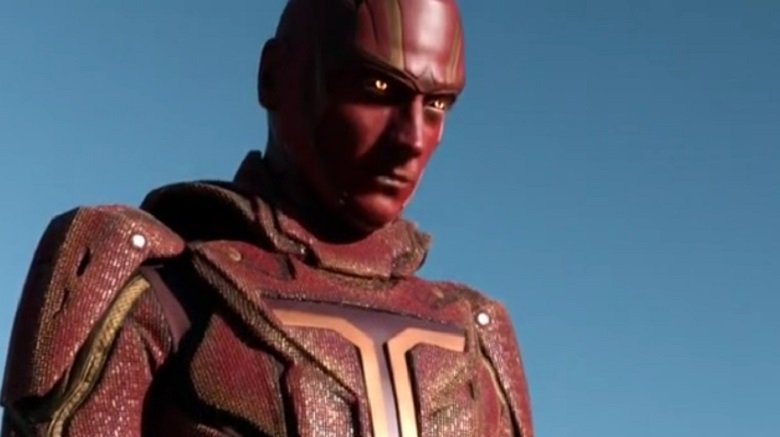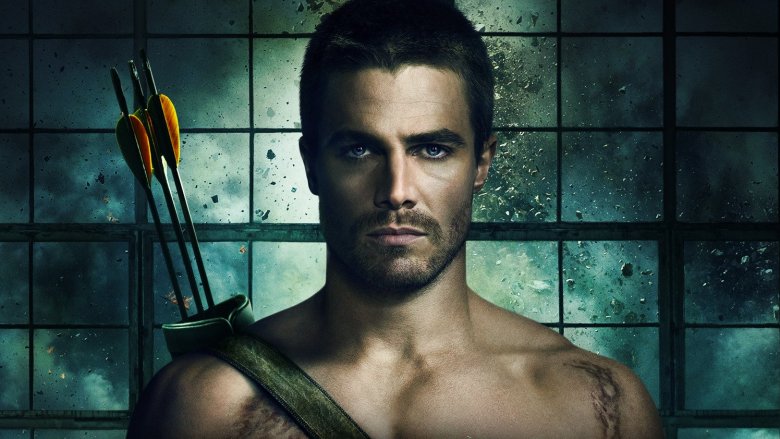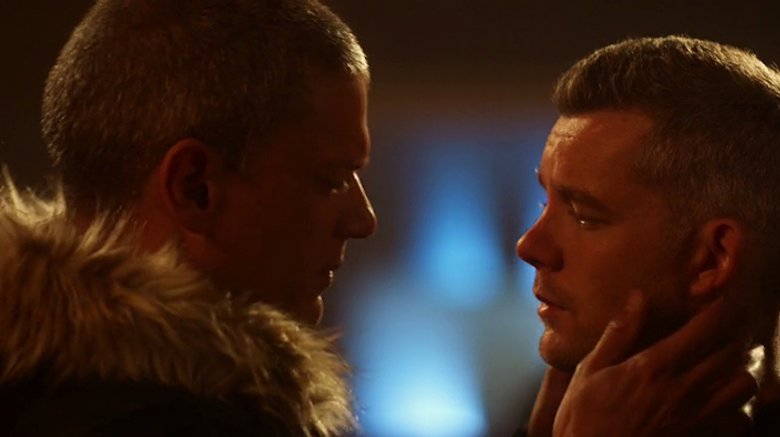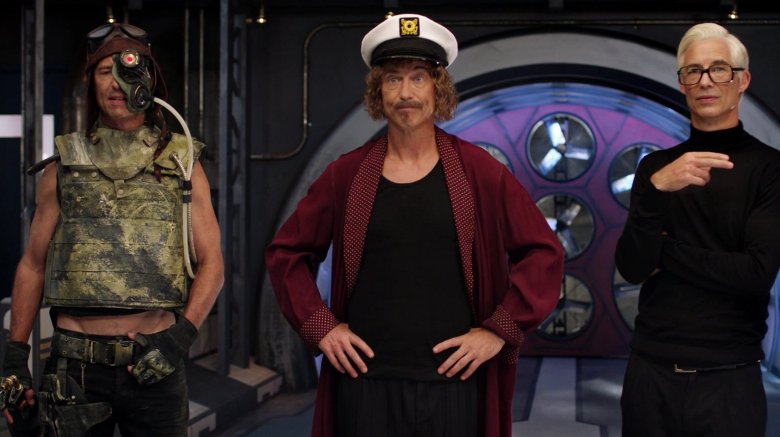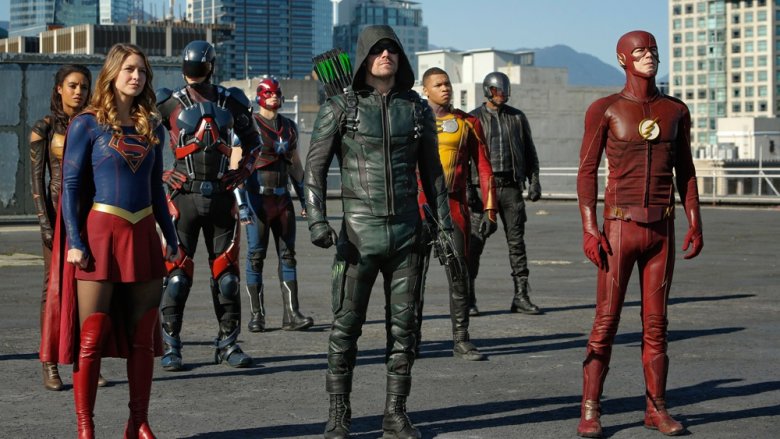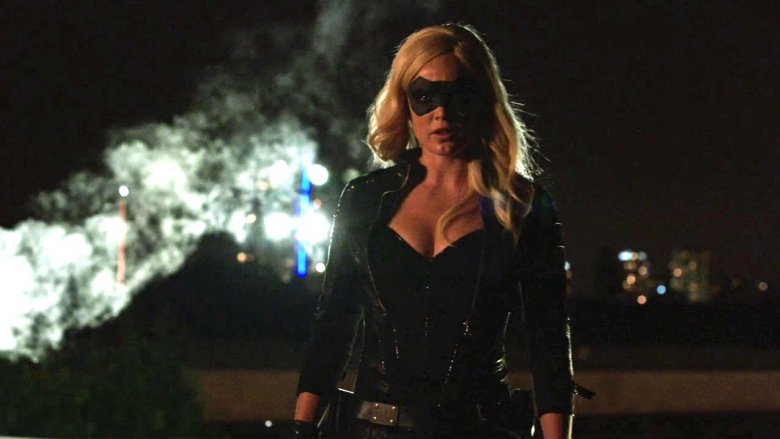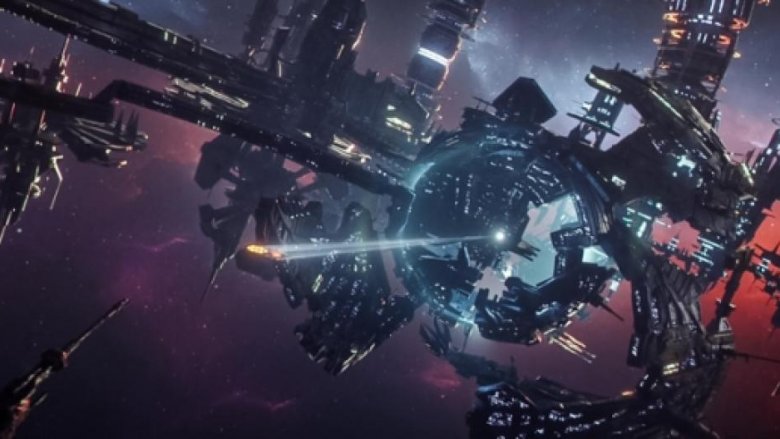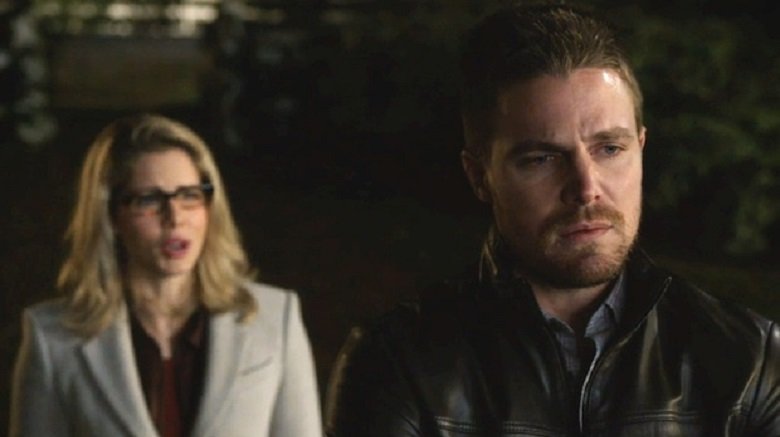5 Best And 5 Worst Things About The CW's Arrowverse
The success of the Arrowverse is a large part of what leads some to believe that while Marvel unquestionably dominates its old rival in theaters, it's the DC properties that are winning the war on the smaller screen. Along with lead characters of the various shows, dozens of DC superheroes and villains are pulled from the comics and introduced into the Arrowverse, from marquee heroes like Flash and Superman to relative unknowns like the Red Tornado, the Elongated Man, and Mister Terrific. Even DC Comics events like Invasion! and Flashpoint have been adapted in Arrowverse shows.
While Marvel's TV shows — particularly their Netflix vehicles — have been impressive, there's something to be said for the Arrowverse giving fans what they want rather than hints, winks, and Easter eggs. In other words, an episode of Jessica Jones included a teenager who had a sticker of the classic Marvel monster Orrgo the Unconquerable on his tablet, and that's cute, but an episode of Legends of Tomorrow had a giant radioactive robot who punched spaceships, and that's pretty awesome.
But nothing's perfect, certainly nothing on TV, and this is no exception. With that in mind, here's a look at the five best — and five worst — things about the CW's Arrowverse.
Best: Big, flashy superhero fun
Shows like The Flash or Legends of Tomorrow aren't meant to be award magnets. The Arrowverse series don't stand out for genre-defying stories, acclaimed acting, or bold political stances. You're not going to find the politics of Luke Cage or the exploration of the aftermath of sexual trauma we saw in Jessica Jones in even the most uncharacteristically serious episode of The Flash. But what you will find is a lot of fun.
The soul of the Arrowverse is big, bright, flashy, action-filled fun. Arrow has been an exception, particularly in its grittier first few seasons, but eventually the superhero fun of The Flash infected its grimmer predecessor. The shows don't take themselves too seriously, so neither do you. Yes, it's kind of messed up that the guys at S.T.A.R. Labs illegally imprison people in their facility. Yes, it's kind of confusing how S.T.A.R. Labs can even afford to operate, considering all they ever seem to do is monitor crime for Barry Allen and illegally imprison people. Absolutely, it can be frustrating that on Legends of Tomorrow Captain Cold's gun never freezes anyone and Pyro's gun never burns anyone, they both just push people a little bit. But whatever, who cares? Poke holes all you want. The villains of The Flash include a psychic gorilla and a giant shark-man, and if you don't think that's awesome, then your soul is a joyless void.
Worst: Not everyone needs super powers
One of the enduring tropes of superheroes is the regular people in the heroes' lives — the friends, spouses, lovers, family, coworkers, and more. Among other things, they anchor the more human halves of the superheroes and highlight the struggle of keeping a balance between their super and normal life. Alfred the Butler, J. Jonah Jameson, and Lois Lane remain fixtures in the lives of the respective superheroes because without them the stories are just fistfights between people in funny outfits. One thing that undercuts that humanization is upgrading the Jimmy Olsens and Mary Jane Watsons of the stories to "super" status, and that's one crime the Arrowverse could be ticketed for a lot.
If you're a series regular in the Arrowverse, odds are pretty soon you'll be wearing a mask and patrolling the streets. On Arrow, Oliver Queen's former lover Sara Lance showed up as the Canary and her sister became Black Canary. Oliver's sister became Speedy, her boyfriend became Arsenal, another of Oliver's lovers became Overwatch, and his old bodyguard became Spartan and briefly Green Arrow. Meanwhile, on The Flash, Barry Allen's two best friends at S.T.A.R. Labs became Vibe and Killer Frost and his stepbrother assumed the role of Kid Flash. Sure, they're superhero shows, but if everyone in Spider-Man's comics became superheroes, there'd be no one to yell at Parker to get him better shots or break up with him and get back together with him and break up with him and... you get the idea.
Best: Revenge of the D-Listers
You will never see all of DC's heroes on the big screen. DC's superhero pantheon is massive. Even if tomorrow Marvel were to fade away like Peter Parker at the end of Infinity War, there would never be enough room for all the heroes of DC to get their time in the spotlight. You want another Batman movie? There will probably be another Batman movie. Another Superman movie? Sure. An Elongated Man movie? That's crazytown. Sober up. Never gonna happen.
So it's a good thing we have the Arrowverse. These shows need stories, and those stories need new heroes and villains, whether they're one-and-done appearances like Red Tornado going toe-to-toe with Kara in an early episode of Supergirl, or the characters become regular fixtures like Ralph Dibny, a.k.a. the Elongated Man, becoming one of Barry Allen's best friends in season 4 of The Flash. In the Arrowverse, we've seen the Justice Society of America in action and we've met the Freedom Fighters of Earth-X. We've seen the vengeance of Huntress and we've watched Wildcat in the ring. We've met villains we're not likely to see on the Big Screen, like the Toyman, the Clock King, and the White Martians. The Arrowverse gives fans the opportunity to see a more detailed version of the mythology they've grown up with than what they can expect to see in theaters.
Worst: "I'm Batm--I mean, Arrow"
Arrow needed more than one season to hit its stride. It's clear the show's creative team had a different vision when the series began. In the first season, the people of what was then called Starling City (apparently because calling it "Star City" didn't seem as gritty as naming it after very small birds) didn't even call the hero Arrow, much less Green Arrow; he was known simply as The Hood.
Those first couple of seasons blatantly "borrowed" from Christopher Nolan's Batman films. At the beginning of the series Oliver Queen is overseas and presumed dead, just as Bruce Wayne is in Batman Begins. Queen returns to Starling City to protect the home of his dead father, just like Bruce Wayne in Batman Begins. Queen initially balks at the idea of taking the reins of his father's company before realizing it could help his crusade, just like you-know-who in you-know-what. Oh yeah, and the Big Bad of season 1? Well that's Malcolm Merlyn, a powerful man who believes he can fix Starling City by killing everyone in the poorest part of town... almost like when Ra's al Ghul released Scarecrow's fear gas in the poorest part of Gotham in Batman Begins. Arrow even recruited the actor Chin Han — he played the money launderer Batman grabbed in Hong Kong in The Dark Knight (you were expecting Batman Begins again, weren't you?).
Best: Diversity
The Arrowverse made its commitment to diversity clear early, particularly in The Flash. Barry Allen's love interest Iris West is African American, as is his adoptive father Joe West. Allen's boss David Singh is gay. The friendship between series regulars Cisco and Caitlin is one of the closest and most endearing in the Arrowverse, yet even though both are depicted as straight, there has never been so much as a hint that their relationship is anything but platonic.
The diversity of the Arrowverse is particularly progressive in the area of LGBTQ representation. During the 2017 crossover "Crisis on Earth-X," the Earth-X version of Leo Snart, a.k.a. Captain Cold, was revealed to be gay and later married his partner Ray Terrill. When Sara Lance was reintroduced as the Canary in the second season of Arrow, she was still attracted to Oliver Queen while at the same time having been in a relationship with Nyssa al Ghul, daughter to Ra's al Ghul. To the relief of fans complaining of "straight-washing" in the character's various film and TV adaptations, John Constantine's introduction to the Legends of Tomorrow cast made it clear the show wouldn't be ignoring his bisexuality. The 2018 Arrowverse crossover promises to introduce the popular lesbian superhero Batwoman, to be played by Orange Is the New Black actress Ruby Rose.
Worst: A Land of Confusion
Time travel is a pillar of some of the most impressive science fiction stories, but sometimes the results are more trouble than they're worth.
The Flash uses time travel, parallel Earths, and alternate timelines as devices more than any of the Arrowverse shows. Day 1 fans may have no trouble navigating it all. However, the fact that each episode of The Flash now includes a recap of the "Flashpoint" storyline — which featured The Flash going back in time to save his mother's life and subsequently going back again to ensure her death because of how his initial interference corrupted the timeline — is proof enough that all the time-hopping can act as a huge barrier to attracting and keeping new viewers.
The personification of this confusion is the brilliant scientist Harrison Wells. Wells was murdered by Eobard Thawne, a.k.a. The Reverse-Flash, before the events of the series, and Thawne assumed his identity. When season 2 introduces the concept of parallel Earths co-exisitng, Team Flash meets the Harry Wells of Earth-2, who becomes a series regular. That Wells eventually returns to Earth-2 after recruiting his Earth-19 replacement, H.R. Wells, who — unlike Harry — has no special scientific aptitude. Harry Wells of Earth-2 returns after H.R.'s death in order to keep everything confusing. In general, characters from parallel Earths jump back and forth so often that traveling between them seems about as commonplace as catching a bus.
Best: The Crossovers
Judging by how sparingly Marvel's lead television characters appear in other series, it's safe to assume the company's motto regarding crossovers is "less is more." In the Arrowverse? The motto is closer to "More is more, stupid — that's why it's the same word."
Since the premiere of The Flash, the respective heroes have regularly appeared in each others' series. Starting with 2014's "Flash vs. Arrow," there has been at least one crossover spanning all the Arrowverse series every year. The 2015 "Heroes Join Forces" crossover set up Legends of Tomorrow. By the following year Legends of Tomorrow and Supergirl had joined the narrative, and so heroes from all four series appeared in the the four-part "Invasion!" The 2017 crossover "Crisis on Earth-X" brought the heroes of the Arrowverse to a parallel Earth overrun by nazis, and the 2018 crossover promises to introduce Batwoman and Lois Lane to the narrative.
Sure, less can be more, but there is something undeniably cool about seeing the heroes of all four shows assemble. Regardless of quality, every year it's at least a little bit like seeing Avengers for the first time all over again in that — because new heroes and villains are added every time — you get to see characters you're used to following in separate stories interact for the first time — like that first Hulk/Thor clash on the helicarrier, or the first time Steve Rogers and Tony Stark curtly said hello without bothering to look at one another.
Worst: Death means nothing
One of the most confusing and troubling aspects of comic book fandom is how upset fans can get over the deaths of favorite characters, sometimes going so far as to aim death threats at comic book writers. It's confusing because you would assume that level of passion necessitated being a longtime fan, and you don't need to be a comic book reader for very long to realize that in superhero comics, death is about as permanent as dry erase marker. For better or worse, the same can be said of the Arrowverse.
Sara Lance, a.k.a. the Canary, was murdered in the beginning of Arrow's third season. Her death was so "permanent" that she soon became a series regular in Legends of Tomorrow. Sara's unwilling killer, Thea Queen, a.k.a. Speedy, was also killed and resurrected the same season. Leonard Snart sacrificed himself to destroy the Time Masters' Oculus in the first season of Legends of Tomorrow, but he's returned numerous times, either by being plucked out of time before his death or by instead featuring his more heroically-inclined Earth-X counterpart. Ralph Dibny was killed by the Thinker in season 4 of The Flash but, unlike any of the many other metahumans the Thinker murdered, was brought back to life by the season's conclusion. Even bothering with a funeral in the Arrowverse seems silly. Unless you don't have super powers or haven't been trained to kick people a lot. Then you're probably dead for realsies.
Best: The Scope
While Marvel's more successful shows have kept closer to the street, the heroes of the Arrowverse have no such geographical limits. As early as its first season, Legends of Tomorrow not only showed its heroes bouncing between ancient Egypt, the Old West, the distant future, and more, but the Waverider and her crew were fighting Time Pirates in deep space. The very origin of Supergirl's Kara Zor-El is interstellar. Barry Allen's connection to the enigmatic Speed Force allows him to travel through time by doing nothing more complicated than running, and his allies at S.T.A.R. Labs have figured out how to go back and forth between parallel Earths as easily as regular people walk through a door.
In other words, the Arrowverse has no more limits than the comic books on which its shows are based. Sure, the special effects of different times and places might be more impressive in a summer blockbuster, but really not by much. Considering the sheer number of episodes that are produced in every television season, it's insanely impressive how well the effects teams are able to render alien worlds and distant eras, not to mention the various CGI monsters, aliens, hawk people, and super-heroes.
Worst: OMG, the emo...
In a TV show you need drama, even if it's a superhero action show. Even the comics upon which Arrowverse shows are based were filled with drama, usually revolving around the heroes' conflict between their hero lives and their personal ones.
But in the Arrowverse... man. It's bad. It's really bad.
Sometimes it doesn't make sense. Take the episode of Supergirl when Kara goes on a date, and the date is interrupted when Bizarro grabs Kara and flies away with her. When she returns and finds her date (who doesn't know she's Supergirl), she asks to speak to him alone and he says, "Are you breaking up with me?" Dude. You just watched her get pulled into the sky, and when she inexplicably returns unharmed your question is "are you breaking up with me?" How is your question anything but "WHAT THE HELL HAPPENED" repeated 67 times?
More often than not, it's pure formula. Someone keeps a secret. They reveal the secret, usually in a room where all the premiere characters are gathered. There's an argument. People hate each other for an episode and then everything's fine. There's a series-specific version on Arrow that involves Oliver Queen learning that someone is secretly crimefighting. He'll tell them to stop, they won't stop, he'll give them tantrum-silence for half an episode, and then he's totally cool with it.
It's just predictable and annoying. You wish someone would cheat on someone else. Steal their lunch from the break room. Anything to mix things up.
